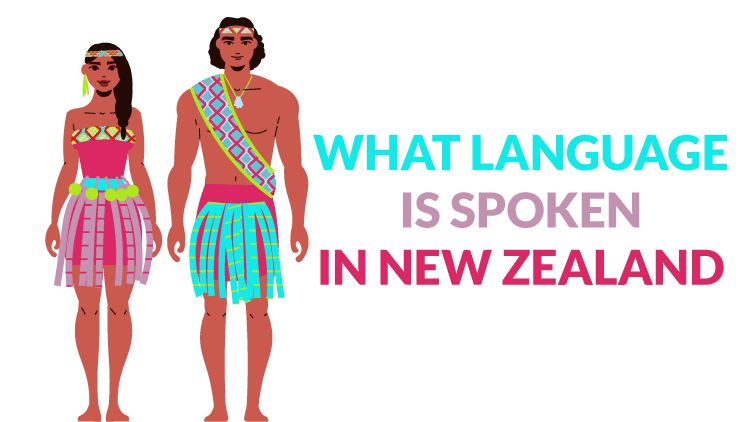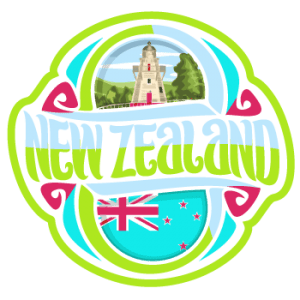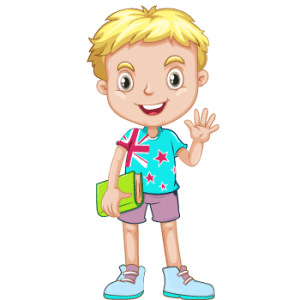
What Language Is Spoken In New Zealand?
New Zealand
New Zealand is a country of two main islands and many smaller ones, located in the southwest Pacific Ocean and east of Australia. It’s home to the Maori people, who originally came from other Pacific islands and became the first inhabitants of New Zealand. Today, New Zealand has become one of the most linguistically diverse countries in the world, with over 120 indigenous languages spoken there! Which languages are most popular? Let’s take a look at what language is spoken in New Zealand!
Languages in New Zealand
English is spoken throughout all regions of New Zealand as it is the official language, though there are some minor variations between dialects in different areas.
Māori is also a popular language to learn in school, and you can even participate in a Māori-language immersion program through many schools and travel companies. According to surveys taken by linguists at Victoria University of Wellington, more than 5% of people over 15 years old have some knowledge of Māori as a second language.
Another 2% speak it as their first language, which makes it one of only two official indigenous languages in New Zealand (the other being Cook Island Maori).
Most people consider English their native tongue, however. Like most other Western countries, English has been the dominant language for centuries when British settlers arrived and created a distinct cultural identity that we now call New Zealand.
The country’s highest court is called the Supreme Court; its currency is called the dollar; its national anthem celebrates God Save the Queen. Even Māori words like kiwi, haka, and whanau were absorbed into New Zealand’s vocabulary. And yet this isn’t entirely true—Māori still lives on in specific phrases and names that permeate Kiwi culture.
For example, kia ora means hello or welcome. And many place names across New Zealand contain Māori words—from Cape Reinga on North Island to Cape Palliser on South Island.

Maori, the official language of New Zealand
After English, Maori is the most common language spoken in New Zealand. The majority of native English speakers are fluent enough to understand some of its key phrases and greetings, but it’s not possible to get by speaking only Maori. One hundred percent of schools in New Zealand teach English from a young age.
Maori is conducted at the primary school level as an additional subject, with many secondary schools also offering bilingual classes for students. More than half of all ethnic Māori speak English fluently or to a helpful level. However, their linguistic influence on New Zealand society can be seen in the number of Māori words incorporated into everyday speech.
Many other languages are also spoken in New Zealand, such as Mandarin Chinese, French, Samoan, and Tongan. Seven of the ten Māori consonant letters have the same pronunciation as in the International Phonetic Alphabet (IPA).
Maori Language Grammar and Vocabulary
The Maori language is a unique and beautiful language spoken by the indigenous people of New Zealand. The Maori language has a rich grammar and vocabulary that is quite different from other languages. In this essay, we will take a closer look at the Maori language’s grammar and vocabulary. One of the most exciting aspects of the Maori language grammar is the use of particles. Particles are small words that are used to indicate the grammatical function of a word or phrase. For example, the particle “ka” is used to indicate the subject of a sentence. The particle “ki” denotes the object of a sentence.
Another exciting aspect of the Maori language grammar is the use of reduplication. Reduplication is the repetition of a word or phrase for emphasis. For example, the word “tangata” (person) can be reduplicated to form the word “tangatanga” (people). The Maori language has a rich vocabulary that includes many words unique to the Maori culture. For example, the word “whanau” (family) has no direct translation in English. The word “koha” (gift) is another example of a word that is unique to the Maori language.

Hauraki Gulf languages, including Whakatōhea
Northern Tauranga Moana, Southern Tauranga Moana, Whakatōhea, and Te Arawai-Makirikiri languages, consist of two groups of dialects: Eastern (Tūmatauenga) and Western (Tāne).
All are extinct. However, there are speakers of these languages across present-day Aotearoa who are working towards revitalization efforts. A recent study in 2006 found that between 2% and 6% of Māori have a good understanding of the Hauraki Gulf languages.
Approximately 7% to 10% of Māori adults speak one or more varieties of the language fluently. There is also an emerging generation of young people with knowledge and expertise in this area.
The most likely reason for this growth is through education, work placements within communities where their mother tongue is spoken, and immersion programs for children at schools within those communities. There are currently three significant initiatives taking place involving Hauraki Gulf Languages:
1) Mātaatua Collective Research Programme, which was established in 2003;2) Ngāti Raukawa Matawhiti Community Language Centre and;3) Waikato University’s kohanga reo program teaches mōrehu as a first language to preschoolers. It has been claimed that the Hauraki Gulf languages are among the most threatened in the world. Only two fluent speakers remain, both over eighty years old.
A Brief History of New Zealand Language
New Zealand is a country with a rich and unique history, and this is reflected in its language. The first inhabitants of New Zealand were the Maori, who arrived from Polynesia around 1000 AD. The Maori language is still spoken by around 15% of the population and is an official language of New Zealand. English is the other official language and is spoken by the majority of the people. However, there are also several other languages spoken in New Zealand, including Samoan, Hindi, and Mandarin.
New Zealand has a long history of language use and change, and this is reflected in the diversity of languages spoken in the country today. The Maori language is the most well-known and widely spoken indigenous languages and has been an official language of New Zealand since 1987. The English language has also been an official language since 1987 and is the most widely spoken language in the country. However, there are several other languages spoken in New Zealand, including Samoan, Hindi, and Mandarin.
What other languages are spoken in New Zealand?
Cook Islands Māori
The Cook Islands have their distinct language, Māori. Māori is a Polynesian language closely related to those spoken in parts of eastern Polynesia. The main dialects spoken are Ngatikahuati and Ngatiterangi.
More than 60% of people in Rarotonga speak Te Reo Māori, while it’s under 20% in Aitutaki and Manihiki. In addition to these two main dialects, there are many local variations based on islands or regions. The vocabulary and pronunciation vary slightly between these regions, although all residents can understand each other quickly enough if they wish to do so.
There is also no written form of the language, as the oral tradition was passed down for generations before being written down by European missionaries.
Green Island or Tokerau Maori
New Zealand Maori, Mãhōtāki, or simply Mãori, is spoken by about a quarter of New Zealanders. It’s closely related to Cook Islands Māori and somewhat more distantly to Hawaiian and other Polynesian languages. The name Māori comes from Maa ori, meaning normal person.
Like most Polynesian languages, it is an isolating language; that is, words consist of single root syllables (in this case, usually monosyllabic) with relatively few grammatical inflections. While there are dialects of Maori in the far north of the North Island, the dialects in much of the south resemble each other so closely that they may be considered mutually intelligible.

Te Aupouri dialects
The native language of most of its population is English, although some Maori remain fluent in their traditional tongue. English is predominantly spoken in urban areas; elsewhere, Maori and regional dialects predominate. Some of these dialects have begun to die out due to language revitalization efforts by Māori communities. The most widely known example is Hutt Valley Kiwi which has been largely subsumed by mainstream Māori and New Zealand English. Other standard ethnic dialects include Samoan, Cook Island Māori, Niuean, and Tokelauan. Read this guide to know how to translate PDF English to hindi?
Waitaha dialects
The indigenous language spoken in Canterbury is an offshoot of Maori called Waitaha dialects. The origin of these dialects can be traced back to two main tribes: Ngai Tahu, which controlled land from Otago northward, and Ngati Mamoe, a tribe that lived further inland. Together, these dialects became known as Kati Mamoe (inland language). The Waitaha dialect was one of three that developed from Kati Mamoe, alongside Rangitane (Taranaki) and Kurahaupo (Canterbury). Though they vary slightly—some believe there are more than 20 unique dialects—they remain mutually intelligible with each other.
Samoan
Samoan is the native language of the Samoan Islands, which are located to the east of New Zealand. Samoan is also a member of the Austronesian family of languages. Samoan is spoken by around 200,000 people, making it the most commonly spoken Austronesian language in New Zealand. Samoan is not an official language of New Zealand, but it is used in some schools and churches.
Mandarin
Mandarin is the most commonly spoken language in New Zealand after English. Mandarin Chinese language is a member of the Sino-Tibetan family of languages, which includes Tibetan and Burmese. Mandarin is spoken by around 200,000 people in New Zealand. Mandarin is not an official language of New Zealand, but it is used in some schools and businesses.
Hindi
Hindi is one of the most widely spoken minority languages in the world. It is the official language of India and is also spoken in many other countries, including New Zealand. There are many reasons why Hindi is spoken in New Zealand, including a large number of Indian immigrants, the popularity of Hindi films, and the fact that Hindi is one of the official languages of the United Nations.
One of the main reasons why Hindi is spoken in New Zealand is a large number of Indian immigrants. According to the 2013 census, over 200,000 Indian people are living in New Zealand, which is the third-largest group of immigrants after the British and the Chinese. Many of these Indian immigrants come from Hindi-speaking regions of India, bringing the language to their new home.
Another reason Hindi is spoken in New Zealand is the popularity of Hindi films. Hindi films, also known as Bollywood films, are trendy worldwide, and New Zealand is no exception. Many people in New Zealand enjoy watching Hindi films, and as a result, they learn some of the languages. Hindi films are often musicals, so they are a great way to learn about the Hindi language and culture.

New Zealand Languages by Region
New Zealand is home to a diverse range of languages, with over 60 different dialects spoken across the country. While English is one of the most commonly spoken languages in New Zealand is Maori.
Maori is the indigenous language of New Zealand and is spoken by around 20% of the population. It is most commonly spoken in the North Island, particularly in the Northland region. E predominant language, several regional languages are also spoken.
Another common language spoken in New Zealand is Samoan. Samoan is the native language of the Samoan Islands, which are located just to the north of New Zealand.
It is spoken by around 5% of the population and is most commonly heard in the Auckland region. Another language that is widely spoken in New Zealand in Mandarin. Mandarin is the official language of China and is spoken by around 3% of the population. It is most commonly heard in the Auckland region, which has a large Chinese community.
Preserving New Zealand’s Linguistic Heritage
In the 19th century, New Zealand saw significant changes as English speakers settled across both the North Island and the South Island. This period marked a transformative era for the indigenous Māori, whose rich culture and language began to interact more intensively with European influences. The influence of the Pacific islands is also evident in New Zealand’s cultural tapestry. Today, the Māori Language Commission plays a crucial role in preserving and promoting the Māori language, ensuring it thrives alongside English in both islands, thereby honoring the country’s unique heritage and diverse linguistic landscape.
Language revitalisation efforts have become pivotal for various communities, including the deaf community and South Island Māori. Legal recognition of language by statute has significantly supported these efforts, ensuring that these languages are preserved and promoted. Institutions such as Auckland University Press and Cambridge University have published extensive research and resources that aid in these revitalisation initiatives. By focusing on the academic and practical aspects of language preservation, these institutions contribute to the broader goal of sustaining linguistic diversity and cultural heritage for future generations.
Promoting Linguistic and Cultural Diversity
Cambridge University Press has published numerous resources on the intricacies of language, including the correct pronunciation of names of people and the structure of declarative sentences. One of the common challenges addressed is the use of double vowels, which can significantly impact common pronunciation patterns. By providing detailed guides and research, Cambridge University Press helps linguists and language learners understand and adopt correct pronunciation, ensuring clarity and accuracy in both spoken and written communication.
The Ministry for Culture and Heritage has played a crucial role in preserving New Zealand’s cultural legacy, especially throughout the 20th century. One significant initiative was their comprehensive report into claims concerning Tolaga Bay, which highlighted the importance of recognizing regional variations within the country’s heritage. This report underscored the unique cultural and linguistic diversity found in New Zealand, including the influence of international languages. By addressing these variations and claims, the Ministry ensures that the rich tapestry of New Zealand’s history is acknowledged and preserved for future generations.
Expert Translation & Cultural Insights
In Aotearoa New Zealand, our translation services cater to a diverse range of languages and legal requirements. We specialize in translating documents with official status, ensuring they meet the stringent standards required for legal proceedings. Whether translating from Northern Chinese to English or vice versa, our team ensures precision and accuracy. English is our primary language of expertise, and we guarantee that all translated documents uphold the integrity of the original content, facilitating smooth and effective communication in any legal context.
Christopher Luxon, a prominent figure of European descent, has garnered significant attention in New Zealand’s national highlights due to his leadership and political influence. Amidst the diverse cultural landscape of the country, the special status of the Maori people remains a pivotal aspect of national identity and heritage. Figures like Clayton Mitchell also contribute to the dynamic political and social environment, ensuring that the voices of all communities are heard and respected. Together, these leaders and their diverse backgrounds enrich New Zealand’s cultural and political tapestry.
Exploring Pacific and New Zealand Linguistics
The University of Otago has produced significant research on the linguistic structures of Pacific languages, including those of the Cook Islands. One such study, available for further reading via the “Download Article” option, delves into the usage of indefinite articles, proper articles, and definite articles within these languages. This research highlights the unique grammatical frameworks that distinguish Cook Islands languages from more widely spoken languages, providing valuable insights into their linguistic complexity and cultural significance.
Research into the linguistic landscape of New Zealand has revealed fascinating aspects of both historical and contemporary language use. For deaf people, understanding and using both passive and active sentences is crucial for effective communication, especially in educational contexts. Studies have shown that the adjacent vowels found in Maori words often present unique challenges for learners. Furthermore, examining Pre-European Textual Culture in New Zealand provides insights into the language and communication methods used before widespread European contact. These elements all contribute to a richer understanding of how language evolves and adapts in New Zealand.
Research published by Bridget Williams Books and Otago Heritage Books has delved into the intricacies of New Zealand’s linguistic diversity, particularly focusing on the variation in grammar between different languages and dialects. Descriptive grammars often highlight how the passive form and active form are used differently across languages, illustrating the rich tapestry of grammatical structures. By comparing these variations, researchers gain deeper insights into the unique linguistic features that characterize New Zealand’s heritage, preserving this knowledge for future generations.
To Summarize: What languages are spoken in New Zealand?
It’s a country that is part of Oceania, known for its beautiful nature and landscapes. It is inhabited by about 4.8 million people and has an area of approximately 268,000 km2 (103,204 sq mi), making it Australia’s third-largest country.
The English language is still the official language of New Zealand because 95% of people speak English as their first or second language. Around 2% of the population speaks Māori, and only 24% are fluent. There are many dialects of the Māori language, but they are all mutually intelligible.
The main dialect is Northern Island Māori which has more speakers than any other dialect. Another example is Southern Island Māori which is mainly spoken on the east coast of the South Island around Dunedin and Otago.
The third dialect is Eastern Māori, which covers most of the North Island and some parts of south Auckland on the North Island’s east coast. A fourth dialect is Central Māori, spoken mainly in Taupo on the central plateau of the North Island. While efforts are underway to establish Māori as an official language, Māori do not have guaranteed representation in Parliament, unlike New Zealanders. The latter have guaranteed representation due to their right to use English.
FREQUENTLY ASKED QUESTIONS
How do you say hello in the New Zealand language?
In New Zealand, there are three official languages: English, Māori, and New Zealand Sign Language. The most commonly used greeting in New Zealand English is “hello” or “good day.” However, in Māori, the most frequently used greeting is “kia ora.”
What language does New Zealand mostly speak?
New Zealand is home to many different languages, but the most commonly spoken language is English. According to the 2013 Census, 86 percent of the population speaks English as their first primary language. Other widely spoken languages include Māori (3 percent), Samoan (2 percent), Hindi (1 percent), and French (1 percent).
What challenges do learners of Māori face with pronunciation?
Learners of Māori often face challenges with pronunciation due to adjacent vowels and unique consonant sounds not found in English. These pronunciation patterns require careful study and practice to master the correct sounds and intonations.
What are the official languages of New Zealand?
The official languages of New Zealand are English, Māori, and New Zealand Sign Language. Māori and New Zealand Sign Language were given official status through legislative acts in 1987 and 2006, respectively.
How does the Māori Language Commission support language revitalization?
The Māori Language Commission, known as Te Taura Whiri i te Reo Māori, supports language revitalization by promoting the use of the Māori language in all areas of public life, developing educational resources, and certifying Māori language translators and interpreters to ensure high standards of language use.
